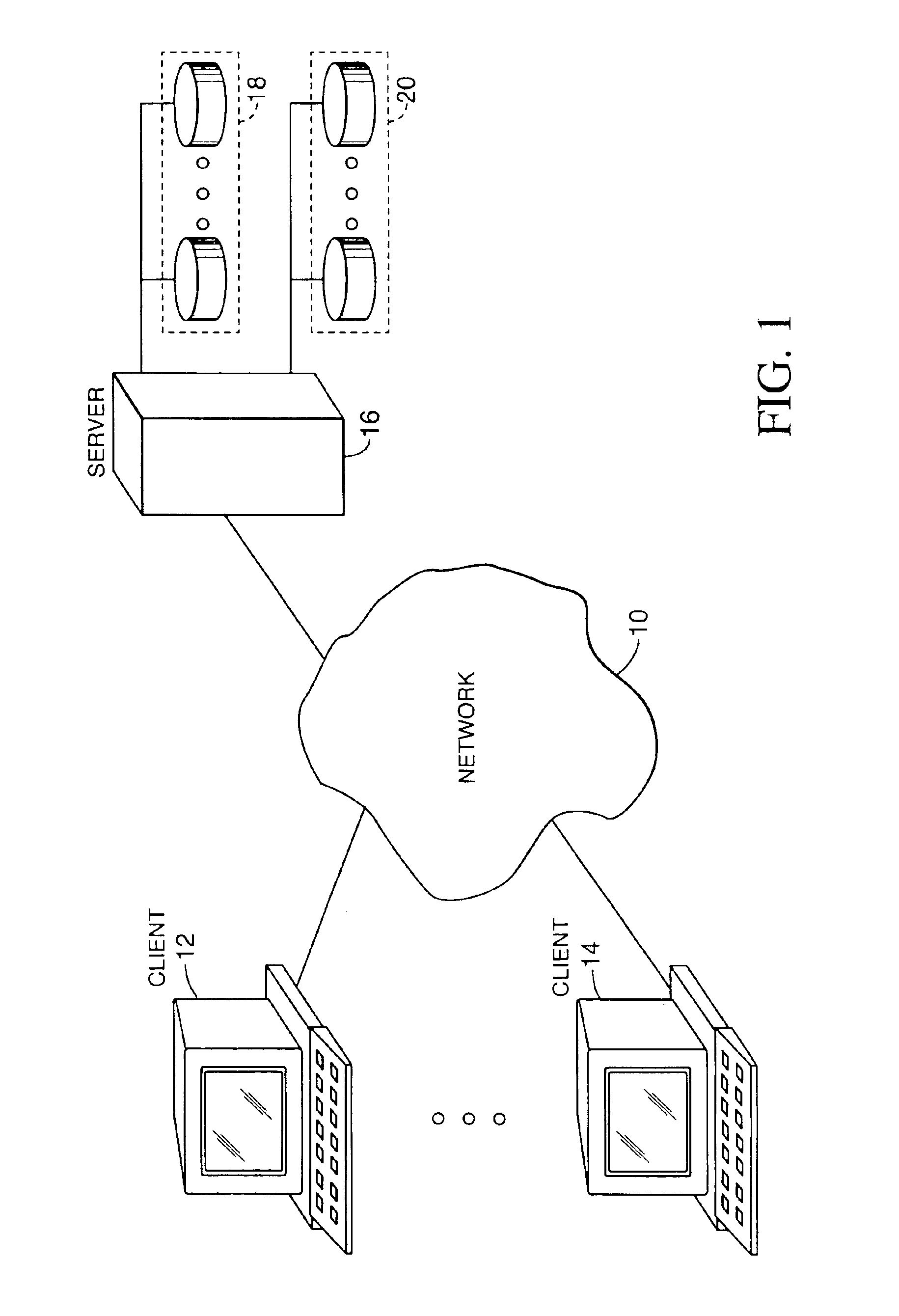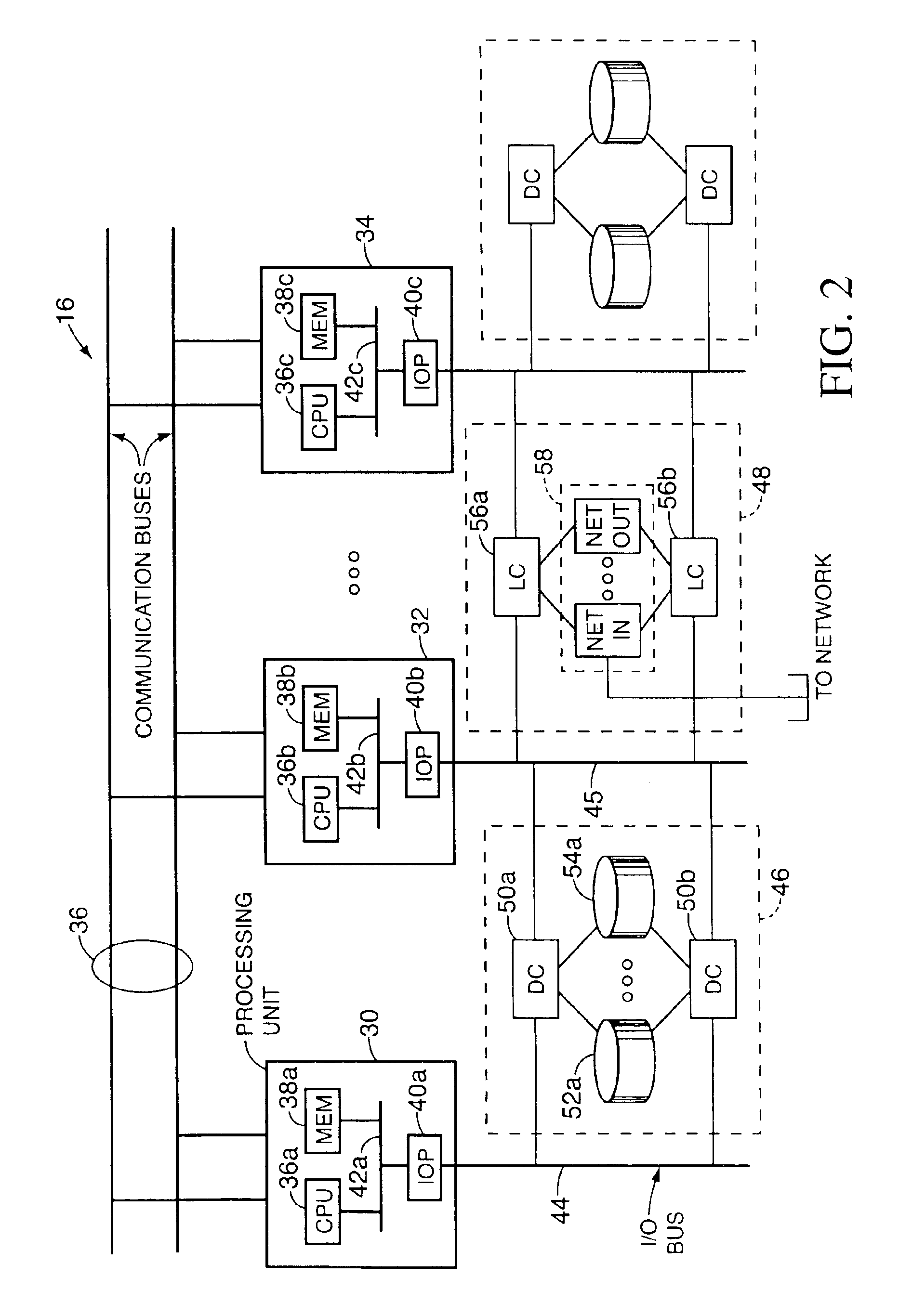Method of mixed workload high performance scheduling
a scheduling method and workload technology, applied in the field of scheduling processes in an operating system, can solve problems such as increasing the complexity of context switching, affecting the performance of processes on the server, and priority-based scheduling systems
- Summary
- Abstract
- Description
- Claims
- Application Information
AI Technical Summary
Benefits of technology
Problems solved by technology
Method used
Image
Examples
Embodiment Construction
[0033]FIG. 1 shows a system setting of the present invention. In this setting a network 10 interconnects one or more clients 12, 14 and a server system 16. The network can be a public network such as the Internet or a private network such as a local area network. The server has one or more processing units (not shown), each of which is connected to a plurality of storage volumes 18, 20.
[0034]FIG. 2 shows a server architecture for the server 16 depicted in FIG. 1. Typically, processing unit pairs 30, 32 or 32, 34 are interconnected by a communication bus 36 and each processing unit 30, 32, 34 has a CPU 36a-c, interconnected via a bus 42a-c to memory 38a-c and I / O Processor (IOP) 40a-c, respectively, which connects via an I / O bus 4445, to an I / O subsystem such as a permanent storage system 46 or a local area network system 48. Disk controllers (DC) 50a-b are dual-ported to connect to the IOP 40a-b in each processing unit 30, 32, 34 of a processing unit pair to provide a redundant conn...
PUM
 Login to View More
Login to View More Abstract
Description
Claims
Application Information
 Login to View More
Login to View More - R&D
- Intellectual Property
- Life Sciences
- Materials
- Tech Scout
- Unparalleled Data Quality
- Higher Quality Content
- 60% Fewer Hallucinations
Browse by: Latest US Patents, China's latest patents, Technical Efficacy Thesaurus, Application Domain, Technology Topic, Popular Technical Reports.
© 2025 PatSnap. All rights reserved.Legal|Privacy policy|Modern Slavery Act Transparency Statement|Sitemap|About US| Contact US: help@patsnap.com



